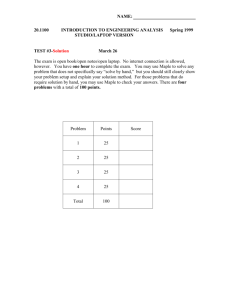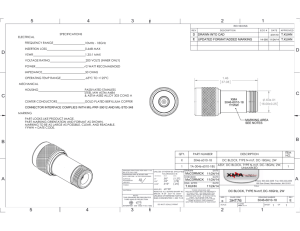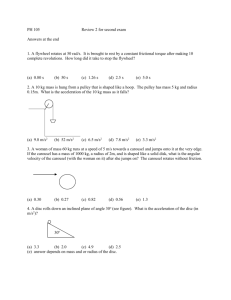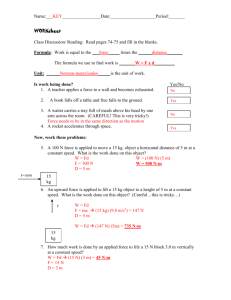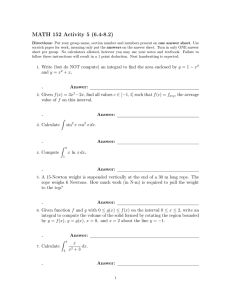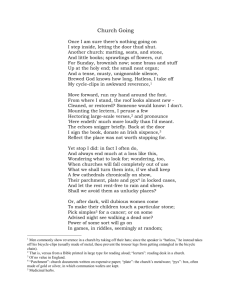RESEARCH NOTES PRIME POWERS BINOMIAL EXPANSIONS MODULO J.
advertisement
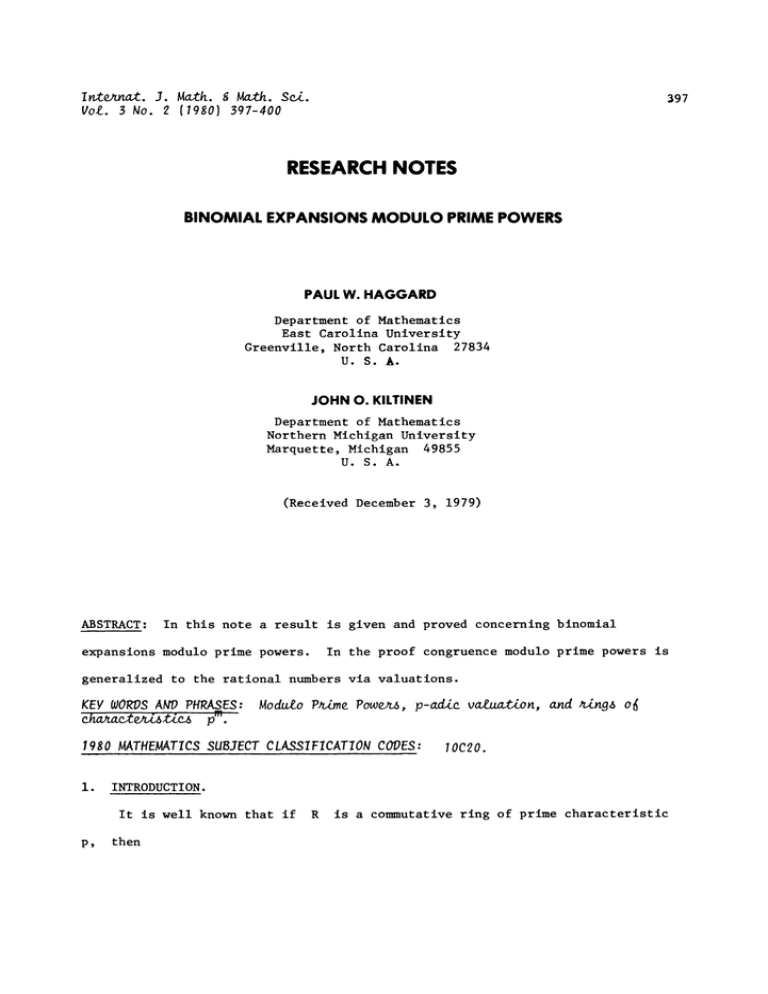
I nternat. J. Math. Math. Sci.
Vol. 5 No. 2 (1980) 597-400
,97
RESEARCH NOTES
BINOMIAL EXPANSIONS MODULO PRIME POWERS
PAUL W. HAGGARD
Department of Mathematics
East Carolina University
Greenville, North Carolina 27834
U.S.A.
JOHN O. KILTINEN
Department of Mathematics
Northern Michigan University
Marquette, Michigan 49855
U.S.A.
(Received December 3, 1979)
ABSTRACT:
In this note a result is given and proved concerning binomial
In the proof congruence modulo prime powers is
expansions modulo prime powers.
generalized to the rational numbers via valuations.
KEY WORDS AND PHRAS_ES: Modulo Pime Powers, p-adic valuation, and rings of
characteristi p’"
1980 MATHEMATICS SUBJECT CLASSIFICATION CODES:
i.
INTRODUCTION.
It is well known that if
p,
IOC20.
then
R
is a commutative ring of prime characteristic
P. W. HAGGARD AND J. O. KILTINEN
398
(x +
y)P
(x +
y)P
p
x
yP
+
(l.i).
and more generally,
for any
and
x
y
in
R.
n
x
p
n
+
yP
n
The reason that (2) holds is that
{I
c(pn,k)
if
i < k <
if
k
0
pn-i
or
p
(1.3)
(mod p).,
n
and so the interior terms all vanish when one applies the usual binomial expansion
formula.
One cannot expect such a simple expansion with a non-prime characteristic.
However, a generalization of (1.3) leads to a recognition of the vanishing terms
in the case of a ring of prime power characteristic.
To develop this result, we use the notation
valuation on the rational numbers
and
an integer
k
Vp(0)
Recall
.
for any
x, y
pro)
x E y (rood
relation on
integers
in
Q.)
For
x, y e Q
is the highest power of
and positive integer
p
p-adic
dividin
m,
define
y) am. One can show that this defines an equivalence
v (x
P
which reduces to the usual equivalence relation modulo
on the
pm
We will need the following fact about this relation:
x, y e Q and J, k e Z,
and y
k (rood pm),
then xy
Jk (rood pro)
J (mod pro)
x
if
(1.4)
MAIN RESULTS
THEOREM:
for
to denote the usual
Vp(J/k) vp(j) Vp(k) for a rational number J/k. (Set
that Vp(X + y)
min{Vp(X),Vp(y)} and Vp(Xy) Vp(X) + Vp(y)
For all
2.
P
Iff
Q
Z.
Vp(k)
Q:
v
For
p
a prime,
m
if
p
and
n
positive integers with
n R m-l,
and
pro)
(2.1)
0 < k < pn
c(pn’k)
(pm-l,i)
k
if
k
(ie,
i.p
Vp(k)
n-’l
_<
n-m)
(rood
399
BINOMIAL EXPANSIONS MODULO PRIME POWERS
Note first that
PROOF:
v
p
n
v (.F__)-p K
(c(pn,k))
(2.2)
v (k).
p
n
To see this, write
PJ
Note that
for
k
pJ
iff
i
1 < i
k-l,
Now if
v (k) < n-m,
P
0 (rood
c(pn,k)
Now take
n
n
n
2
i
(pn-i)
I < I < k-l.
for
pro),
k
Vp(C(pn,k))
from (2.2),
then
i.p
nC(p ,i-p
Write
p
n-m+l
of
p
n-m+l
Vp(pn/j)
n-(n-m)
n-re+l)
n-m+l
J
are removed.
Also, since
n-(n-m)
m,
P
terms in the concluding product.
i’p
less than
one
i-p
n
n-m+l
such that
when all factors
(pn_j)/j + i pn/j and
-i (rood pro)
has (pn_j)/j
Since there are
i.p
n-m+l
pn_j
J
n-m+l
c[pm-l,i)’"
terms reduce to
i
P
n-m+l
2.p
Note that the first
n-v (j) >
so
m,
in the following form,
(pn_(i_l)pn-m+l). (pn_(i_2)pn-m+l)
i.pn_m+l
J.
>
to the front:
The concluding product is taken over those
n-m+l
0
and this case is proven.
n-m+l
p
p
Vp((pn-i)/i)
Thus,
and so (2.2) follows.
grouping the terms divisible by
C(P
Pn-k-i(k-l)
Y__. pn-l. P "’-2
C (pn,k)
i
for all of the
i(p
n-m+l
i)
such terms in the product, by (1.4), one has
c(pn,i
For
odd or
p
i
m-l,l). (-i) i (pn-m+l-l)
pn-m+l)
2
m-I
C(2
and
odd.
i
v2(c(2n,i.2n-m+l)) v2(2n/i’2n-m+l)
c(2n,i-2n-re+l)
gets
2
p
2x+l.
times some odd integer, say
for any
n
n
m m-l.
i.2
pro).
even, this gives the desired result.
The one remaining case is
is odd,
(rood
C(p
2rex +
2
m-I
Equating for each such
n-m+l)
C(2
m-1
i)
(rood 2m)
m-l.
Now by (2.2) and since
Thus,
c(2n,i. 2n-m+l
i
is
Then
2
m-I
n
(rood 2m)
to the special case
n
m-l,
one
which is the desired result again
P. W. HAGGARD AND J. O. KILTINEN
400
This theorem yields the following binomial expansion in rings of characteristic
m
p
COROLLARY:
n > m-l,
If
R
is a commutative ring of characteristic
then for any
x
n
m-I
(x + y) p
and
P
7.i: 0
C
y
in
p
m
and if
R,
(pm-i ,i)-x [pro-l-i) p
n-m+l
"Yi" p
n-m+l
(2.3)
Note that the number of nonvanishing terms depends only on the characteristic
and not on the exponent
p
n
and that for
m
i,
(2.3) reduces to (1.2).
following reference considers some closely related questions.
REFERENCE
J. Kiltinen, Linearity of exponentlation, Math. Mag. 52 (1979), 3-9.
p
The
m
